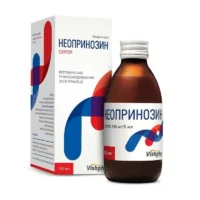Description
Izoprinozin Tablets 500 mg. №30
Ingredients:
Each tablet contains 500 mg of Inosine Pranobex.
Dosage:
The usual dose for adults is 1-2 tablets three times a day. Consult a healthcare provider for appropriate dosage adjustments.
Indications:
Izoprinozin tablets are indicated for the treatment of viral infections, including herpes, influenza, and hepatitis.
Contraindications:
Do not use Izoprinozin if you are allergic to any of the ingredients or have severe kidney disease. Consult your doctor before use.
Directions:
Take Izoprinozin tablets orally with water, with or without food. Follow the dosage instructions provided by your healthcare provider.
Scientific Evidence:
Studies have shown that Inosine Pranobex, the active ingredient in Izoprinozin, has immunomodulatory and antiviral effects. It works by enhancing the immune response against viruses, reducing the severity and duration of viral infections.
Clinical trials have demonstrated the efficacy of Izoprinozin in treating various viral infections, with a good safety profile. Patients experienced faster recovery and reduced symptoms compared to placebo groups.
Additional Information:
- Store Izoprinozin tablets in a cool, dry place away from direct sunlight.
- Keep out of reach of children and pets.




